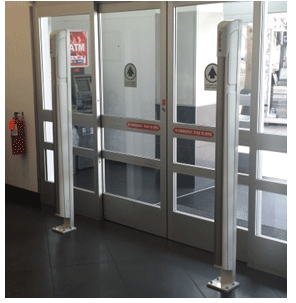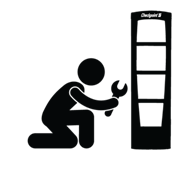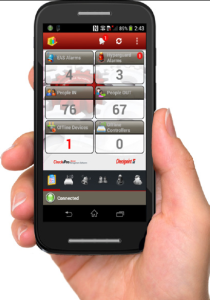 In the UK the number of women apprehended for shoplifting has increased, and has been linked to the fact that they do no longer get government benefits. In the United States shoplifting has increased with millions of dollars lost due to shoplifting every year, and the increase in prices has led many thieves to shoplift items that were unthinkable not too long ago. With the increase of beef prices for example, the number of thieves stealing package meat has reached an all time high. Stores across the country are even considering putting anti-theft packaging on their meat products to prevent thieves from shoplifting it.
In the UK the number of women apprehended for shoplifting has increased, and has been linked to the fact that they do no longer get government benefits. In the United States shoplifting has increased with millions of dollars lost due to shoplifting every year, and the increase in prices has led many thieves to shoplift items that were unthinkable not too long ago. With the increase of beef prices for example, the number of thieves stealing package meat has reached an all time high. Stores across the country are even considering putting anti-theft packaging on their meat products to prevent thieves from shoplifting it.
For more about this topic, follow the links below.
Retailers Fight Theft at Every Turn
As workplace theft remains a constant issue for retail operations, c-stores continue to look for new means to complement tried-and-true theft prevention strategies, as 2016 progresses.
Theft by employees, of both stock and cash, is now among retailers’ top three areas of concern, according to the “US Retail Fraud Survey 2015” conducted by Retail Knowledge, a retail fraud and loss prevention firm. Cash theft, which grew 2% in 2015 is the second biggest concern followed by administrative loss (23%) and shoplifting (11%).
“We can see from consecutive surveys that the amount spent by companies on loss prevention offline has dropped over 30% in the last two years,” said Mark Emmott, director of Retail Knowledge. Meanwhile, money spent on online loss prevention has doubled. “It may be that cutting budgets on loss prevention in some areas have made it easier, in a tough economic environment, for good people to make bad choices,” he added.
NOVEL STRATEGY
This past January, Crime Stoppers and Canada-based Mac’s Convenience Stores joined popular Canadian comic book hero, Captain Canuck, as part of the comic’s 40th Anniversary edition. The issue is being distributed exclusively and free of charge at Mac’s, and through local Crime Stopper programs across Canada.
Retail crime hit a 10-year high in the 2013-14 financial year, with the £603m losses recorded by UK retailers 18% higher than those racked up in the previous 12 months.
Despite this, the British Retail Consortium’s (BRC) annual crime survey also revealed that the volume of theft offences actually fell 4%. While conventional security technology – primarily CCTV and electronic product tags – has been effective at reducing petty shoplifting, a surge in gang-related bulk theft is soaring.
The average value of goods, money or services stolen now averages £241 per incident.
Clearly, the security industry must evolve its approach to tackle this growing threat.
As Retail week Live packs up for another year, we asked several security experts how the industry is harnessing – and could harness – the latest cutting-edge technology to improve not only retail security, but commercial performance too.
Operation Molten Iron targets retail theft
JEFFERSON COUNTY — The Jefferson County D.A.’s office says it’s spent several weeks working with Vestavia Hills and Birmingham police to investigate a retail crime ring. During the operation, about $55,000 worth of merchandise was stolen from stores. To stop thefts, the agencies worked with retail chains operating around the county. Those retailers donated merchandise, and offered help from their workers.
The efforts resulted in three arrests- and the D.A. says more are on the way. Law enforcement officers also recovered hundreds of thousands of dollars in vehicles and store merchandise. They also found 15 pounds of marijuana in one location.


 Tagged merchandise, metal racks, and electrical wiring in this incidental detection zone can have an adverse effect on system performance. As a general rule, tagged merchandise should be equivalent of at least ¾ of you doorway aisle width away from each EAS pedestal. Example; tags should be no closer than 4.5 feet, in a 6 foot doorway. Where possible: metal racks and electrical wiring should be 5 feet or more away from the system.
Tagged merchandise, metal racks, and electrical wiring in this incidental detection zone can have an adverse effect on system performance. As a general rule, tagged merchandise should be equivalent of at least ¾ of you doorway aisle width away from each EAS pedestal. Example; tags should be no closer than 4.5 feet, in a 6 foot doorway. Where possible: metal racks and electrical wiring should be 5 feet or more away from the system.
 You know, sometimes we seem to overthink EAS tagging. Very often, I find that my store managers will focus so heavily on tagging a small, inexpensive (but high shrink) item, that they completely overlook the big ticket item that is absent of any physical security measure. Why is that? A large cooler is just as susceptible to loss as a pair of socks. Maybe it has to do with the perception of what is driving shrink in our stores.
You know, sometimes we seem to overthink EAS tagging. Very often, I find that my store managers will focus so heavily on tagging a small, inexpensive (but high shrink) item, that they completely overlook the big ticket item that is absent of any physical security measure. Why is that? A large cooler is just as susceptible to loss as a pair of socks. Maybe it has to do with the perception of what is driving shrink in our stores. You’ve got a great EAS system. You’re stopping shrink and keeping profits in your store. You’re happy. Losses are down and you might actually make your sales targets. So it’s like Ronco Rotisserie where you just “set it and forget it,” right? Not quite. You have a few things to do if you want that system to provide you years and years of a return on investment.
You’ve got a great EAS system. You’re stopping shrink and keeping profits in your store. You’re happy. Losses are down and you might actually make your sales targets. So it’s like Ronco Rotisserie where you just “set it and forget it,” right? Not quite. You have a few things to do if you want that system to provide you years and years of a return on investment.



 Burnout is an on-going, serious issue in the retail industry. The industry is so immense and pervasive that all of us, even if we’ve never working in retail, have knowledge of and experience with the problem.
Burnout is an on-going, serious issue in the retail industry. The industry is so immense and pervasive that all of us, even if we’ve never working in retail, have knowledge of and experience with the problem.